32 different types of reptiles you can keep as a pet
Calling all budding herpetologists! Here’s a list of the different reptiles that make good pets

If you’re thinking about welcoming a new scaly-skinned addition to your home, allow us to introduce you to the best types of reptiles you can keep as a pet.
These air-breathing vertebrates include a wide range of species. From the much-loved lizards and snakes to the hard-shelled turtles and tortoises who can live for decades (and some, centuries).
Unlike cats or dogs, reptiles don’t carry dander. This means they’re typically hypoallergenic, making them ideal for allergy sufferers. Most reptiles are also cold-blooded, so they’re unable to regulate their own body temperature. Instead, they rely on external heat sources like the sun or the best reptile heating pads to do so. So when you’re introducing a new scaly member into your family, artificial heat sources will be absolutely crucial to the health, and well-being of your reptile.
Reptiles will also need the perfect-sized terrarium and toys for enrichment, along with the right handling and the correct substrate.
To find out the options for different reptiles as pets, stick right here. We’ve compiled a list of different reptiles you’ll want to welcome into your four walls.
32 options for different reptiles as pets
1. Leopard gecko

Not many reptiles can break off their tail if a predator grabs them. But the adaptable Leopard Gecko is one of them.
These clever leopard-printed lizards are nocturnal and can further evade capture by shedding their skin to remove markers predators can use to track them. Generally considered easy to care for, leopard geckos are recommended as a good pet for beginners.
Get the best advice, tips and top tech for your beloved Pets
2. Red-footed tortoise

Tortoise facts aren’t hard to come by. These slow-moving reptiles can’t swim (you’re probably thinking of turtles or terrapins who are water dwellers), but they can dig burrows and holes in the earth to help regulate their body temperature.
Plus, these gracious characters are one of the oldest reptiles in the world, having been around for more than 230 million years.
3. Blue-tongued skinks

Generally considered as easy to care for, feed Blue-tongued Skinks a diet high in protein, vegetables and fruit and make sure they’ve got a large enough habitat so they can thrive, and these reptiles will feel right at home.
This type of lizard loves to spend its days foraging for insects, plants and small animals. With a lifespan of 20 years or more, you’ll have a friend for decades.
4. Bearded Dragons

When provided with the right Bearded Dragon care, these reptiles can live a long and happy life, right by your side.
But just like any pet, beardies can get bored. So it’s a good idea to provide them with a range of enrichment ideas for Bearded Dragons to help keep their mind (and body) busy.
5. Corn snakes

Known for being one of the best exotic pets anyone can own and the preferred species of snake when it comes to the best first pets for children — the non-venomous Corn Snake is small, lightweight, and presents minimal risk to humans.
They’re also relatively low maintenance, needing feeding just once or twice a week depending on age.
6. Ball Python

No matter whether you’re an experienced reptile owner or just getting started, Ball Pythons (which get their name because they curl themselves into a ball when they feel threatened) are low maintenance, small in size, and easy to handle. Growing anywhere between 3-5 feet long, these slithering beauties can live for up to 40 years.
7. Crested Gecko

If you’re a novice lizard owner or are tight on space, Crested Geckos are well worth a look.
They’re a good choice for beginners thanks to their small size, docile and friendly nature, and laid-back diet of crickets, worms, and fruit. Introduce your gecko to a selection of the best toys for pet lizards and they’ll be happy.
8. Chinese Water Dragon

Gorgeously green, Chinese Water Dragons can make for a beautiful reptile pet. These happy-go-lucky four-legged friends are up there with being one of the friendliest lizards out there.
They enjoy being handled and handling them daily helps to keep them socialized. Living for anywhere between 15 to 20 years, these loveable lizards can be housed in pairs.
9. Chameleon

Known and loved for their ability to change color, which helps them communicate with other Chameleons and regulate their own body temperature, these technicolored lizards have been around for more than 65 million years.
Chameleons will spend their days basking, exploring their enclosure, or looking for food, using their tongues and sticky saliva to catch prey.
10. Turtles

With some species living for up to 200 years, the best turtle tanks can help you create the perfect conditions for your loveable reptile – and for decades to come!
When it comes to pet turtle care, these cold-blooded swimmers need sufficient room and an environment set for their needs. From enough light and warmth to clean water and enrichment, all this should help to keep these hard-shelled creatures happy and healthy.
11. Iguanas
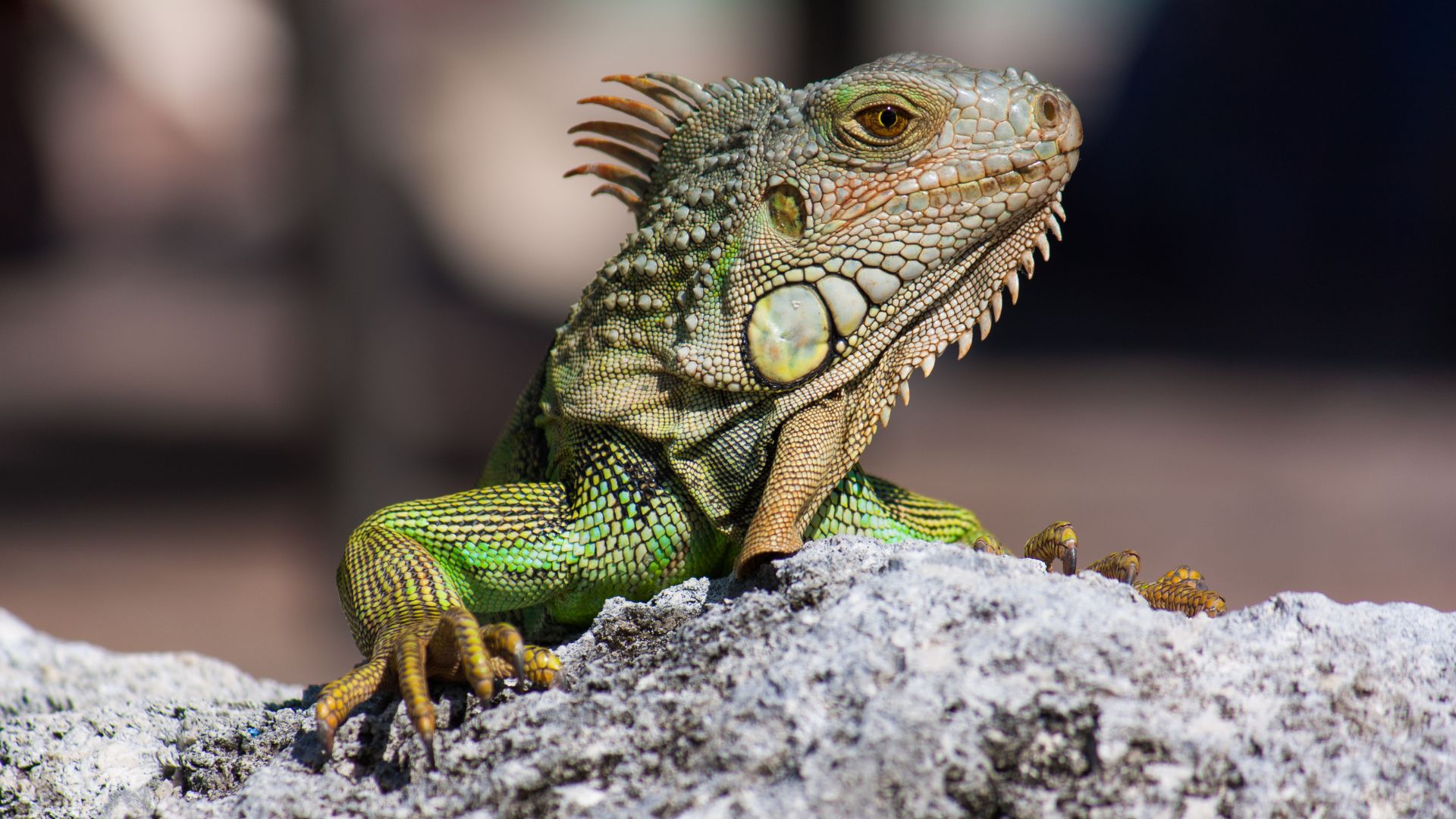
It’s worth noting: Iguanas can be expensive. But that’s not to say that they aren’t worth it! These reptile pals are known as the world’s fastest lizards so they need a big enough terrarium to live, eat and sleep in.
They’ll also need the right humidity levels and temperature to thrive and just know, they can take years to train. But that said, once you’ve taken care of the basics, Iguanas can bond with their pet parents for life, living for more than 20 years when properly cared for.
12. Kingsnakes

Coming in a variety of colors, Kingsnakes are bound to help brighten up your reptile collection.
Originating from Northern America and parts of Central America, they are given their name due to their habit of feeding upon other snakes. Therefore, you should only keep one Kingsnake in each enclosure.
13. African Fat-tailed Gecko
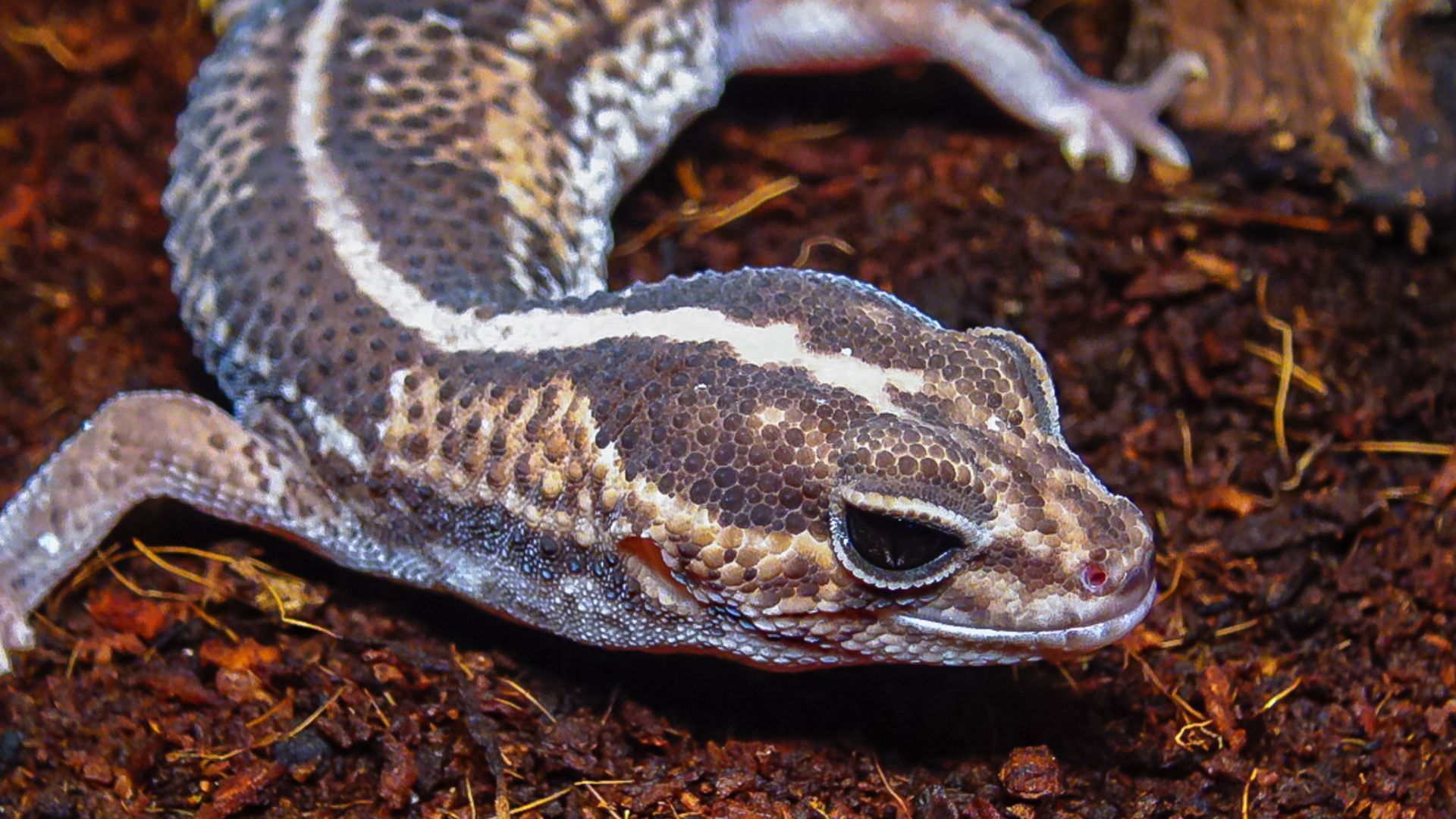
The African Fat-tailed Gecko is completely carnivorous. Whether it’s wax worms, mealworms or crickets, in the wild they’ll seek out beetles and roaches.
These geckos are known for being docile and easy to care for. Thriving in a low-humidity environment, they’ll need around 10-12 hours of light per day.
14. Argentine Black and White Tegu

Having a lifespan of between 15 to 20 years, an Argentine Black and White Tegu differs from most other reptiles on this list because it’s one of the first known warm-blooded lizards. This comes after a 2016 study by Science found that it can raise its body temperature by 10 degrees. Pretty cool, huh?
15. Tokay Gecko
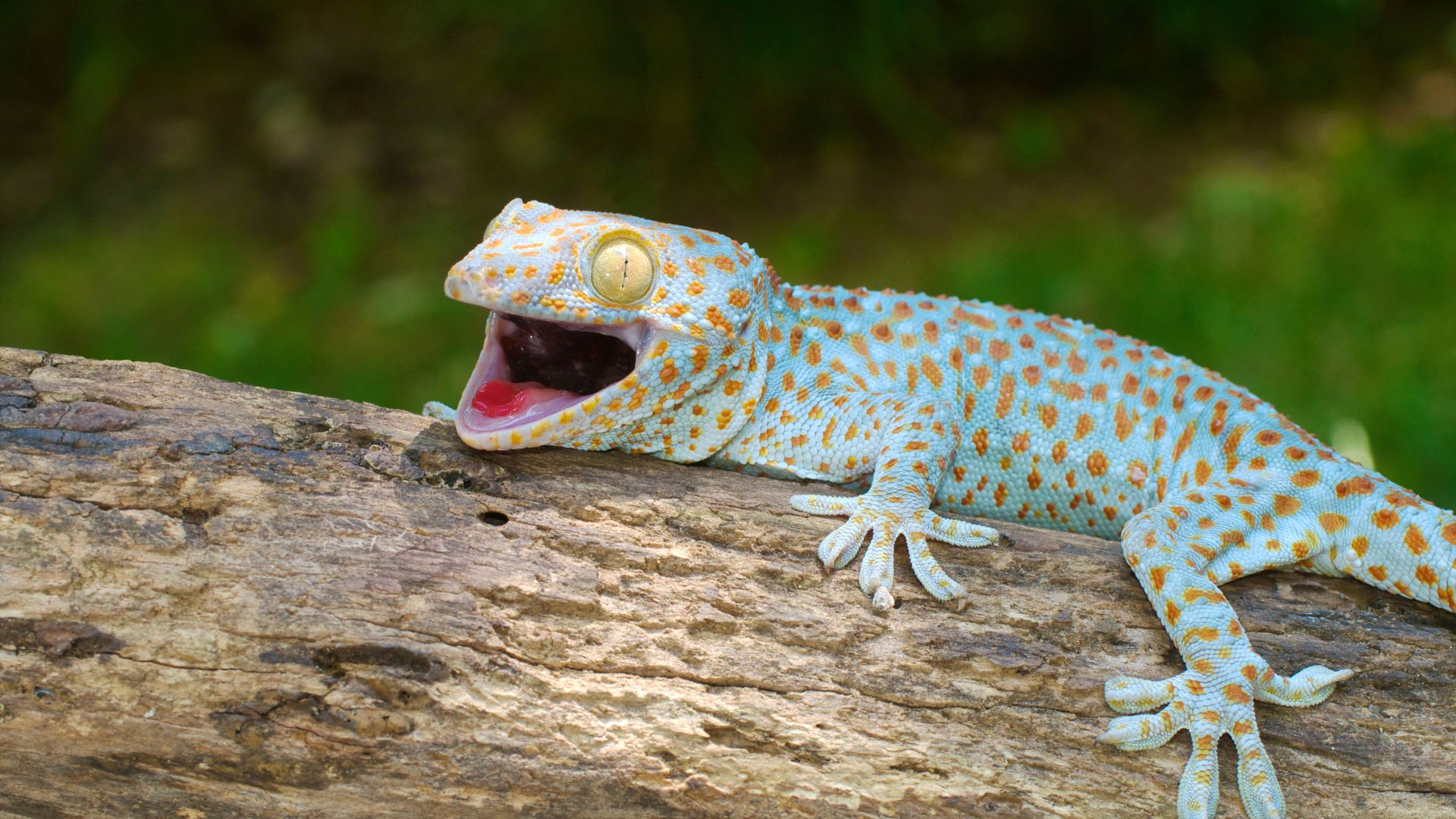
One of the largest living gecko species, these bright and beautiful reptiles are known for their vibrant grey coloring with orange and blue spots.
However, they do have a reputation for having some aggression and being territorial. So they aren’t recommended for beginners. That said, once you’ve nailed their environment and gained their trust, Tokay Geckos are relatively straightforward to care for.
16. Royal Python

Known as one of the best exotic pets anyone can own, Royal Pythons live for anywhere between 20-30 years.
They aren’t the most active of snakes, but they are around 3-6 ft in length, so will need an enclosure big enough for them to slither. Being a naturally solitary species, Royal Pythons can be great starter snakes due to their mild temperament.
17. Spiny-tailed Lizard
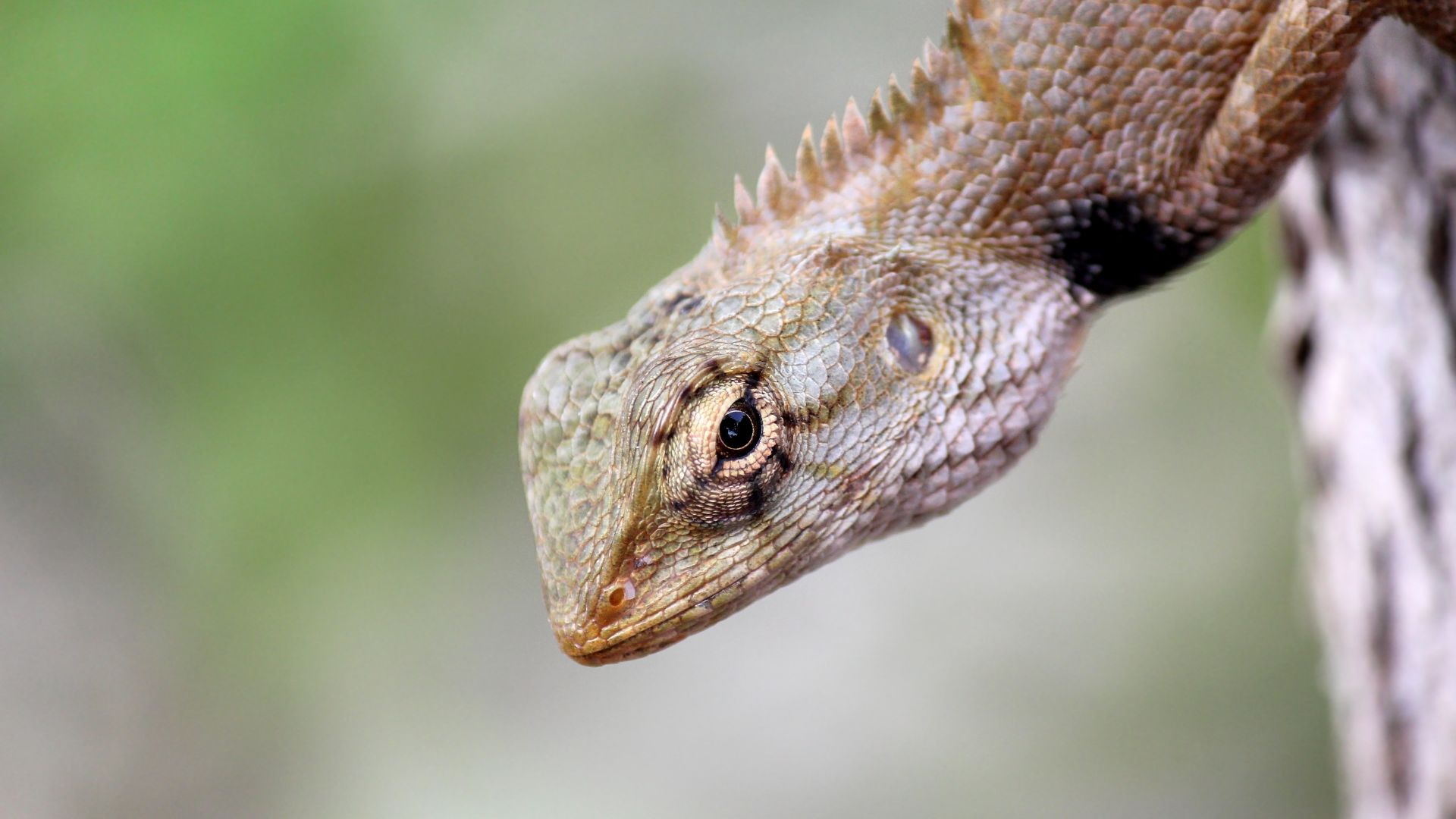
These lizards like it hot, thriving in temperatures over 115 degrees Fahrenheit. Highly active, as their nickname suggests, this type of Uromastyx, comes with spiny tails. Lovers of burrowing, in the wild can live in tunnels of up to 10 feet long.
Therefore, in captivity, they’ll need at least 4 to 5” of soft, sandy substrate to burrow to their heart’s content.
18. Anoles

If you’re after a small pet for compact homes, look no further than an Anoles. Pronounced ‘ah-no-lees’, these brightly colored lizards have large throat fans, or a dewlap, which allow them to communicate.
Like their fellow Chameleon counterparts, they can change hues from their naturally bright green coloring to green, brown, tan, or gray.
19. Savannah Monitor
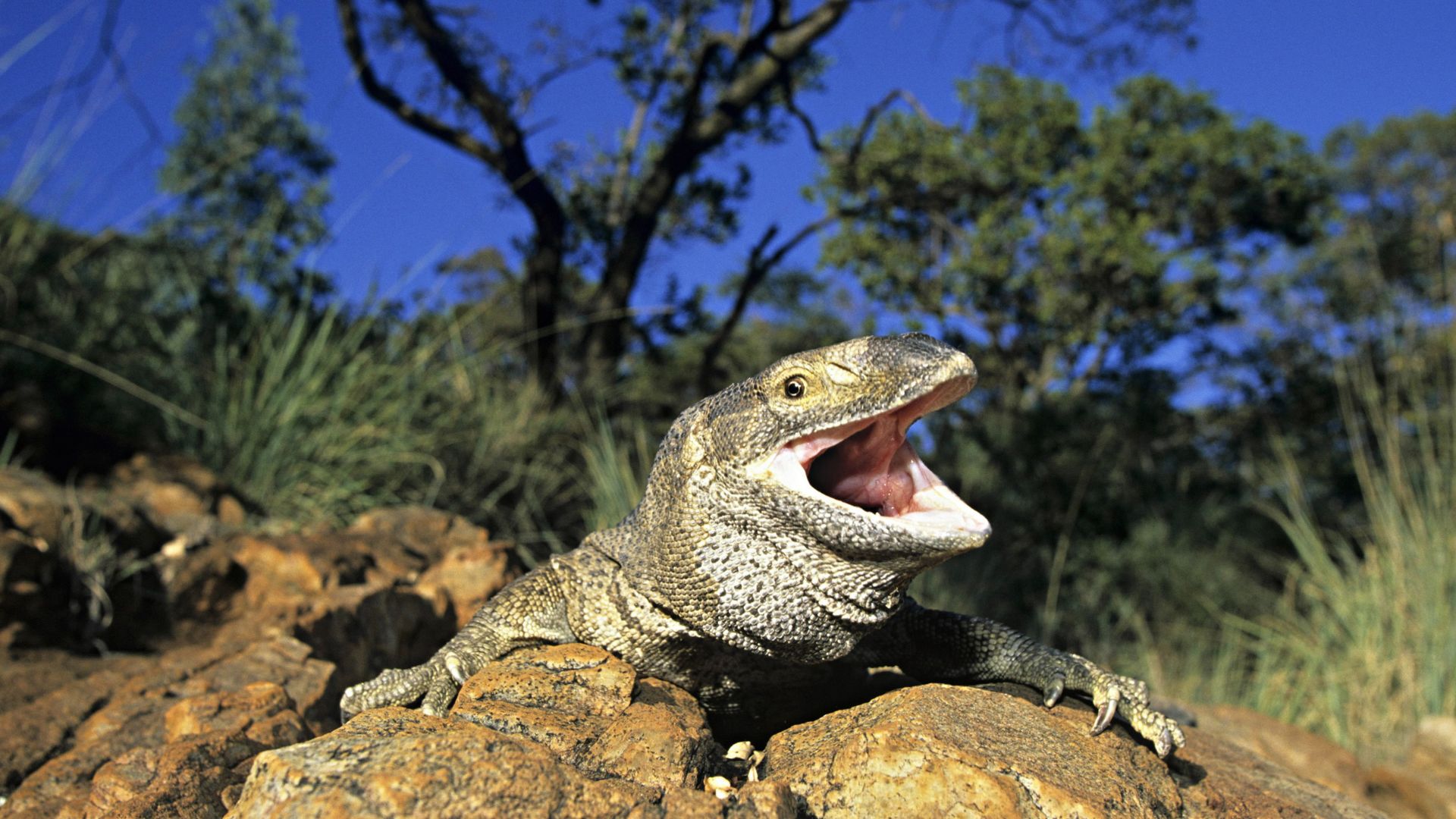
These intelligent reptiles are considered to be medium-sized monitors, native to rocky deserts and open woodlands in west and central Africa.
Despite being legal to keep as a pet, a Savannah Monitor might not be the best option for every scaly-friend lover. We say this because they need large space requirements so they can do all the things they adore, like basking, burrowing, and climbing.
20. Frilled Dragon

Calm, docile, and unique to look at, there’s a lot to love about a Frilled Dragon. These medium-to-large reptiles come with a frill around their neck that they can puff up to scare predators away. It’s why they’re nicknamed ‘frillnecks’.
Another fun fact? These captivating exotic creatures can also run up to 30 miles per hour! So if you intend on inviting one into your home, make sure you’ve got a big enough enclosure to keep them happy and healthy.
21. Russian Tortoises

Fancy a Russian Tortoise as a pet? These highly inactive reptiles prefer to spend their days not doing very much. In fact, they have a short activity period, sometimes just three months per year.
Russian Tortoises need daily exposure to UVB lighting, a substrate that allows for digging, and a good quality diet, with fibrous vegetables, dark leafy greens, and grasses in abundance.
22. Panther Chameleons

Just look at this rainbow-colored creature! One of the most recognizable reptiles, a Panther Chameleon is a beautiful and fascinating scaly pal to keep.
These reptiles require a clean environment and specialized equipment to flourish — this includes the right lighting and temperature. Solitary and very territorial, these diurnal reptiles spend most of their time in isolation.
23. Ornate Uromastyx

It’s official: the Ornate Uromastyx is one of the most common Uromastyx species kept as a pet in the US.
Differing from spiny-tailed lizards in a few different ways, a Male Ornate Uromastyx is usually bright green, blue or red, while females are more muted in their coloring with a lighter shade of dark brown, yellow or red spots.
24. Brazilian Rainbow Boa

Living for up to 30 years with the proper care, these intricately patterned snakes have an iridescent sheen to them, which means their skins have a rainbow-like effect in the sun.
Non-venomous, these reptiles can grow up to 6 feet in length, so an appropriately sized habitat is essential.
25. Hermann’s Tortoise

Like most other cold-blooded reptiles, Hermann’s Tortoises rely on heat from their surroundings to regulate their body temperature.
Another thing to note? These tortoises prefer to keep their four feet safely on the ground. How else would they sunbathe, forage, or spend a small portion of their days digging?
26. Red-eared slider

In the wild, you’ll often spot Red-eared Sliders basking in the sun in groups. These semi-aquatic turtles start as carnivores and become omnivorous, as they age.
So an adult reptile will eat a range of foods, from aquatic plants and insects to fish and snails.
27. Phelsuma grandis

Another green sensation, the Phelsuma grandis, otherwise known as the Giant Day Gecko, is an active and colorful species hailing from the tropical regions of Madagascar.
Often kept as pets in the US, they prosper in environments that have plenty of vertical space and they need UVB lighting along with misting to keep their home a humid one.
28. Veiled Chameleon

Whether you refer to these as cone-headed chameleons or as their more formal scientific name of Chamaeleo calyptratus, these solitary tree dwellers can change color within seconds to help communicate with other peers.
What really makes them stand out though, aside from their intricate coloring, is the casque on the top of their head. In dry habitats, this helps them channel water to their mouths.
29. Rosy Boa

One of the smallest members of the boa family, this snake can make for a great reptile pet to add to your collection.
Generally tolerating handling well and low maintenance, these cold-blooded animals won’t be able to regulate their own body temperature so will need their enclosure to do so for them.
30. Red-eyed crocodile skink

If you’re after a one-of-a-kind pet who scores top marks for elusiveness, look no further than a Crocodile Skink. These fast runners like to hide, burrow, and be left to their own devices and they will freeze or ‘play dead’ if they’re startled.
31. Greek Tortoise

So we’ve heard about a Hermann’s Tortoise and a Russian Tortoise. But a Greek Tortoise now joins our list of the types of reptiles you can keep as a pet.
These outgoing, active, and friendly sun-loving pets measure around 5-8 inches in size, but some can reach up to 12 inches. If properly cared for, Greek Tortoises can celebrate 50 birthdays or more.
32. Gargoyle gecko

These loveable reptiles get their name because of the bumps on their head that look like horns. But despite their rather fearsome title, they are very docile pets.
Gargoyle Geckos love to climb. In fact, they’ll spend most of their nights doing just that. Along with being active during night times, they’re also pretty vocal — especially if there are other gargs around.
Interested in reading or hearing some more information about reptiles? Check out the best pet reptiles or a vet's guide to pet turtle care.

Becks Shepherd is a lifestyle journalist who has worked with titles such as Tom's Guide, Marie Claire, and Fit and Well.
In addition to this, she’s a pet writer with nearly a decade of editorial experience across digital and print media. A devoted “dog aunt” and lifelong animal lover, Becks brings a personal touch to her pet content—whether she’s testing the latest dog gear or digging into behavioral tips.
She works closely with veterinary experts to ensure factual accuracy and is currently exploring animal care certifications to deepen her knowledge. Her work has appeared in leading outlets across health, wellness, and pet care spaces.
